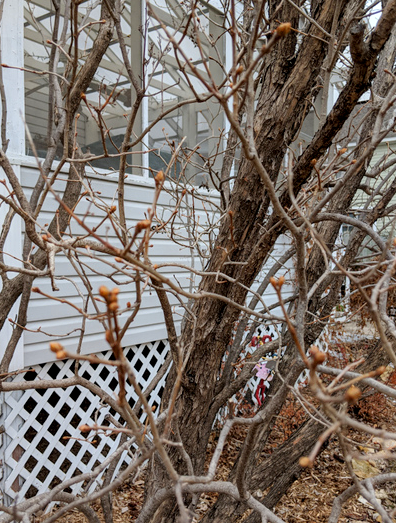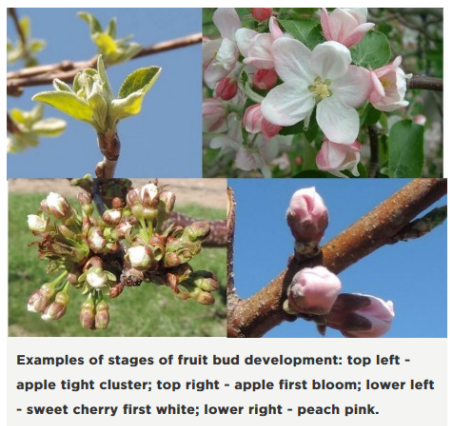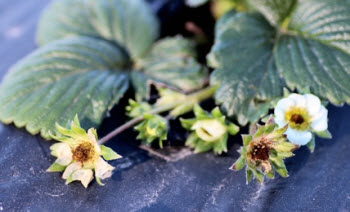Click below to listen to my 2 min. Garden Bite radio show: Critical freeze and Spring buds
The last couple of years, Spring came early in terms of warm temperatures and bud break, then we had a freeze which nipped some of those buds. 2018 is a different story. Coming out of a cold winter, many of us have still been experiencing below normal temperatures. In fact, the Old Farmer’s Almanac is predicting April temperatures to be just below normal and precipitation above normal. Check your budding trees and shrubs.

As I write this on 3-31-18 at 10am, it’s 26 degrees… The average low is 37… not even April fools yet!
This well established lilac should be just fine. The buds are tight and protect the flower inside. As the buds start to open their threshold for cold lessens.
Daytime temps aren’t supposed to get past 36 degrees all next week! The Upper Midwest is experiencing some cold air, that means, if you have younger plants that are not as well established, it’s important to keep an eye on them.
Fruit trees and shrubs are always the ones we worry about most because everyone loves fruit pie! And you don’t get fruit pie without them! Penn State University has a chart on critical temperatures for various fruits. There’s another link below with further pictures.
 There are varying temperatures and stages of when bud freeze will occur on fruits, so it also depends on when buds of fruits start showing. A tight strawberry bud can tolerate temperatures down to 22 F.
There are varying temperatures and stages of when bud freeze will occur on fruits, so it also depends on when buds of fruits start showing. A tight strawberry bud can tolerate temperatures down to 22 F.
 As the bud begins to open and approaches a “popcorn stage” the critical temperature rises to 26.5 F. The fruit’s critical temperature is 28 F, and the flower itself is most sensitive with its critical temperature being 30 F.
As the bud begins to open and approaches a “popcorn stage” the critical temperature rises to 26.5 F. The fruit’s critical temperature is 28 F, and the flower itself is most sensitive with its critical temperature being 30 F.
 Deciduous fruit trees follow a similar pattern although the temperatures will not be exactly the same. Click on this link for more bud freeze thresholds on fruit trees.
Deciduous fruit trees follow a similar pattern although the temperatures will not be exactly the same. Click on this link for more bud freeze thresholds on fruit trees.
Microclimates in your own yards can make a difference. Large bodies of water moderate air temperatures and urban areas with buildings and pavement act as heat syncs that can radiate heat back at night.
